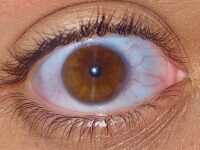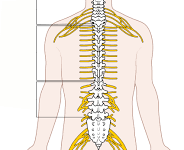Red blood cells (RBCs) are the single-most important factor in gas exchange with the environment and the key to sustaining life. With approximately 70-80 trillion red blood cells present in human bodies at any given time, these cells constitute 70% of all the cells in the body. RBCs are flat and disk-like, featuring indentations on both faces of the cell that give them a distinctive convex shape. Their unique shape optimizes their flow and allows for smooth, uninterrupted movement in blood vessels. Contained within the cell is an important protein group called hemoglobin, an iron-containing compound that carries oxygen. RBCs’ structures are specific to optimize their function as a gas-exchange mediator in the body, and these cells lack internal organelles for the purpose of freeing up space to accommodate more hemoglobin. With RBCs’ lifespans being 120 days, about 5 liters of blood circulate in the human body at any given time.
RBCs play a crucial role in the body’s everyday functioning, providing it with oxygen that can be utilized via metabolism to produce energy. Mutations or abnormalities of function in these cells can influence the amount of oxygen delivered to other cells in the body. In other words, the health of every other cell in the body directly depends on that of its blood cells.
Sickle cell disease is an inherited RBC disorder. Affecting about 100,000 people in the United States, this condition is present at higher rates in African American and Hispanic Americans. Sickle cell disease is common in populations that live in areas where malaria is more common, such as near the equator, because one copy of the sickle cell gene confers a selective advantage and makes individuals less susceptible to malaria while the individual’s health or blood carrying capacity is relatively unaffected. However, two copies of the sickle cell gene will manifest in the phenotype, or the physical characteristics of the disease. The expression of the phenotype causes the production of blood cells that are sticky, hard, curved, and in a sickle-like shape. This change is due to an amino acid mutation in a gene that codes for RBCs. The oxygen-carrying capacity of sickle-cell-shaped RBCs is significantly diminished, so these cells tend to die earlier than healthy RBCs. In addition, the shape of sickle cells is not conducive to regular blood flow, and these cells can get stuck in smaller arteries and veins, causing clogs and impeding flow. As a byproduct, there is a less effective gas exchange system in the body, which also affects the functioning of the many other cells that depend on blood to deliver oxygen. This can manifest in a variety of health effects including pain, fatigue, stroke, and even a significantly lower life expectancy.
Remarkably, anewly developed CRISPR-Cas9 gene editing therapy by Vertex Pharmaceuticals and CRISPR Therapeutics provides a novel treatment avenue for this painful disease. Scientists invented CRISPR technology a mere 11 years ago by repurposing the inherent defense mechanisms found in bacteria. CRISPR is a form of gene editing that can help remove and replace mutated or dangerous genes that can affect the health of an organism. In the context of sickle-cell disease, CRISPR does not target the mutated gene but instead increases the transcription of fetal hemoglobin, a substance whose production is normally limited soon after birth. Fetal hemoglobin has a higher affinity for oxygen than the adult counterparts, which makes it more likely that oxygen can be held onto and transported by blood cells in sickle-cell patients. Although the mutated cell shape is not directly affected through this therapy, the loss in RBC efficiency due to sickle cell disease is counteracted by promoting the oxygen-carrying capacities of the misformed cell.
However, trials with CRISPR are often costly and limited in scale. While the current approval for the sickle-cell treatment was based on a trial in which the therapy reduced the prevalence of painful inflammatory attacks characteristic of sickle-cell disease in 28 out of 29 participants, the long-term effects of the therapy and its full safety profile are yet to be determined. Vertex has plans to enroll patients in human clinical trials in a 15-year safety study to track important longitudinal information about the drug efficacy, long-term effects, and safety. Current plans include the creation of 50 treatment centers to administer treatment, but due to high costs of personnel, materials, and more, these centers are expected to serve only about 12 patients a year.
“Unfortunately, the continued focus on developing new biopharma technologies combined with the neglect of patient access and equity has resulted in a novel array of optimistic but highly inaccessible treatments for sickle cell disease.”
While promising, it is important to acknowledge the inherent challenges and financial implications associated with this advanced therapy. The extensive requirements, including multiple blood transfusions, rounds of cell mobilization, and toxic-based preconditioning procedures, contribute to an estimated cost of nearly $2 million per person for the implementation of this groundbreaking treatment. Until CRISPR technology becomes more affordable, patient accessibility is severely limited, and the general public may have to look at alternatives to treat sickle cell disease.
Existing treatments remain viable, as hematopoietic stem cell transplant (HSCT) is already an important genetic treatment option. However, the cost of this treatment, about $400,000, is still a large financial burden and barrier for most. Another cost-effective alternative used in Nigeria is a drug called hydroxyurea, which increases fetal hemoglobin production. However, this drug is not widely available and does not have a lasting impact like other genetic technologies. Unfortunately, the continued focus on developing new biopharma technologies combined with the neglect of patient access and equity has resulted in a novel array of optimistic but highly inaccessible treatments for sickle cell disease.






